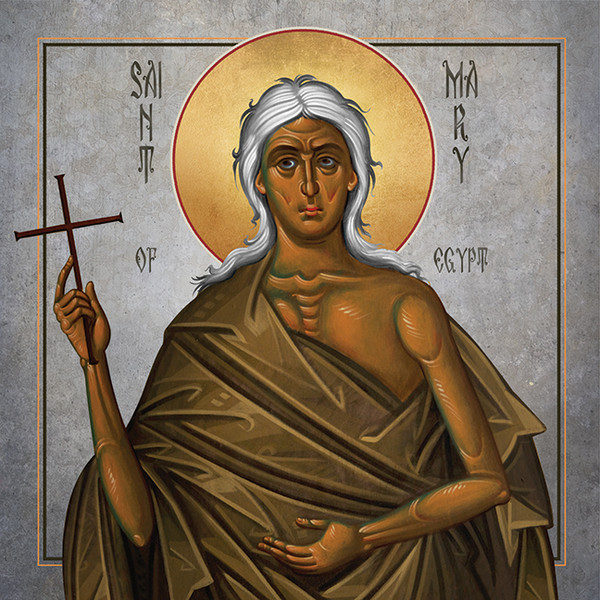-

Icon of St. Christopher 21st c. - 00STCH02
$28.00 - $335.00RRP:Feast Day/Commemorated: May 9 Saint Christopher lived during the 3rd century and was martyred around the year 250 under the reign of Emperor Decius. He was a man of immense stature and strength,... -

Icon of St. Stephen the New -21st c. - 00STSN01
$28.00 - $335.00RRP:Feast Day/Commemorated: November 28 In 715, Stephen the New was born into a pious Christian family in Constantinople. His parents, having only daughters, had prayed for a son and, in gratitude,... -

Icon of St. Mary of Egypt -21st c. - 00STME06
$34.00 - $325.00RRP:Feast Day/Commemorated: April 1 The Journey of Saint Zosimas and the Penitent Mary of Egypt Saint Zosimas, a monk who had lived an exem -

Icon of St. Luke the Surgeon - 21st c. - 00STLS01
$34.00 - $325.00RRP:Feast Day/Commemorated: April 22Saint Luke, a native of Syrian Antioch, was a highly educated physician skilled in Greek medicine. Upon hearing about Christ, he traveled to Palestine and eagerly... -

Icon of St. Luke the Evangelist - 21st c. - 00STLE01
$34.00 - $325.00RRP:Feast Day/Commemorated: April 22Saint Luke, a native of Syrian Antioch, was a highly educated physician skilled in Greek medicine. Upon hearing about Christ, he traveled to Palestine and eagerly...
Description
Feast Day/Commemorated: June 15
Saint Jerome, born Eusebius Hieronymos Sophronius in Stridon, was a pivotal figure in Christian history. He received a thorough secular education in Rome, where he initially succumbed to worldly temptations before deciding to lead a more pious life. Around the age of 20, he was baptized and later traveled to Gaul. Driven by a profound desire to dedicate his life to God, Jerome felt a calling to monasticism, a path that would shape the rest of his existence.
After a brief return to his hometown, where he cared for his younger siblings, Jerome journeyed to the East. He spent five years living an austere, ascetic life in the desert of Chalcis. During this period of intense spiritual and academic discipline, he became a master of both the Hebrew and Chaldean languages. His time in the desert was not one of complete solitude; it was here that he began his extensive and influential correspondence, with 120 of his letters surviving to this day. This period was crucial in preparing him for his future theological and scholarly work.
In the 360s, a theological controversy prompted Jerome to leave the desert for Antioch, where he was ordained a priest. He later traveled to Constantinople to study with prominent holy figures like Gregory the Theologian and Gregory of Nyssa. In 381, he arrived in Rome and became the secretary to Pope Damasus I. However, his strong denunciations of the moral failings of contemporary Christian society earned him many enemies, and after three years, he was forced to leave the city. Seeking a life of greater spiritual purity, he eventually settled in a cave in Bethlehem, near the traditional birthplace of Christ.
Living in Bethlehem, Saint Jerome's scholarly and creative work truly flourished. He authored numerous dogmatic, polemic, and historical works, as well as commentaries on Scripture. His most significant and enduring contribution, however, was his new translation of the Old and New Testaments into Latin. This monumental work, known as the Vulgate, became the standard biblical text for the Western Church for centuries to come. His life in the cave was one of rigorous asceticism, and he lived to witness the fall of Rome to the Goths in 410.
Saint Jerome's final years were spent in the very same cave in Bethlehem, where he passed away around 420. His life was a testament to his dedication to both spiritual devotion and intellectual rigor. Although his relics were later moved from Bethlehem to Rome, their exact location is currently unknown, with only his hand enshrined in a church near Rome's Piazza Farnese. He remains a revered figure for his immense contributions to biblical scholarship and his unwavering faith.
About Our Icons (Print and Mounted):
Theophany Works Icons are handcrafted reproductions, made with prayer and a desire for excellence. Choose from our standard mounted option on Museum Quality Paper or you may choose to upgrade to Museum Quality Matte Canvas. Both offer a rich print with saturated coloration and are finished with our high-grade UV protection sealant offering a subtle tactile texture that gives our icons a truly authentic feel. Additionally, each Maple-shelled panel is prepared with a painted chamfered front edge as well as a round-over on the back edge to give a shadow box effect when hung on the wall. Our Icons come standard with a sliding key-hole slot on the back which allows for balanced hanging. These beautiful American-made reproductions will be a beloved addition to any home or parish at the fraction of the cost of a hand painted icon.

